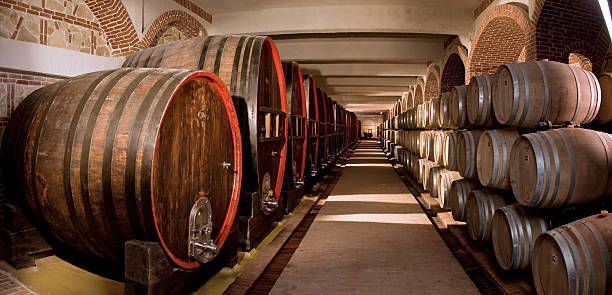Crafting a Unique Experience: The Intersection of Art, Science, and Culture in Craft Beer
Craft brewing has become popular in the beer industry, with small and independent breweries popping up worldwide. The art and science of craft brewing are at the heart of this trend - a delicate balance between creative expression and scientific precision. From selecting the right ingredients to the perfect brewing process, craft brewers combine artistry and innovation to create unique and flavorful beers that stand out in a crowded market.
But what exactly goes into the art and science of craft brewing? In this article, we will study the various aspects of craft brewing, including the ingredients used, the brewing process itself, the different beer styles available, and the flavors and aromas that make craft beer so distinctive. We will also delve into brewing chemistry, examining the role of water chemistry, enzymes, fermentation, and carbonation in the brewing process.
In addition, we will look at craft breweries' quality control measures to ensure that their beer is of the highest possible quality, including testing for contaminants, consistency in brewing, and packaging and distribution. We will also examine how technology and innovation shape the craft brewing industry, from automation to advancements in brewing equipment and sustainable practices.
But before that, we will explore the history and importance of craft breweries in the beer industry and how they are revolutionizing how we think about beer. Whether you are a craft beer fan or simply curious about the art and science of craft brewing, this article will provide a fascinating look into one of the world's most exciting and dynamic industries.
The History of Craft Beer
We can trace the history of craft breweries in the beer industry back to the 1960s and 70s when a small group of passionate beer enthusiasts began brewing their beer at home. These early homebrewers were dissatisfied with the mass-produced beers available on the market. They saw an opportunity to create unique, high-quality beers with flavors and aromas unavailable in commercially produced beers.
In the 1980s, the craft beer movement gained momentum as these homebrewers began opening their small breweries and taprooms and selling their beers to the public. They brewed their beer in small batches, using high-quality, locally-sourced ingredients. Small teams of passionate brewers run these early craft breweries.
The craft beer movement continued to grow throughout the 1990s and 2000s as more and more beer drinkers began to appreciate the unique flavors, aromas, and brewing techniques used in craft beer production. Craft breweries began experimenting with different beer styles, such as IPAs, stouts, and sour beers, and began using innovative ingredients like fruit, spices, and coffee in their brewing process.
Significance of Craft Breweries
Today, craft breweries are essential to the beer industry, with thousands of small and independent breweries operating worldwide. These breweries produce a wide variety of beers, ranging from traditional European styles to experimental and innovative creations that push the boundaries of what is possible in beer brewing.
The importance of craft breweries in the beer industry goes beyond just producing unique and flavorful beers. Craft breweries are often deeply connected to local communities, supporting local businesses and events and serving as gathering places for beer enthusiasts and locals.
Craft breweries also play an essential role in supporting the local economy, providing jobs, and driving economic growth in their communities. They often source their ingredients from local farmers and suppliers, and their taprooms and brewpubs can help to revitalize neighborhoods and communities.
Finally, craft breweries are essential to the beer culture, promoting the appreciation of high-quality, locally-produced beers and creating a sense of community among beer enthusiasts. They serve as a platform for innovation and experimentation in beer brewing, and their dedication to quality and craftsmanship has helped to elevate the entire beer industry.
Craft Breweries have revolutionized the way we think about beer, bringing new flavors, styles, and techniques to the forefront while supporting local communities and driving economic growth. Craft breweries are a testament to the power of passion and creativity, and their continued success is a testament to the appeal of high-quality, locally-produced beer.
Exploring the Art of Craft Brewing: Ingredients, Process, Styles, and Flavors
Craft brewing has become an increasingly popular industry, with many small businesses creating unique and flavorful beers that stand out from the mass-produced options found in most stores. The art of craft brewing involves a careful combination of ingredients, a meticulous brewing process, and a commitment to creating unique beer styles that appeal to a wide range of drinkers. We'll explore the art of craft brewing in-depth, covering the ingredients, brewing process, beer styles, and flavor and aroma considerations that go into creating a great craft beer.
Ingredients
The first step in crafting a great beer is selecting high-quality ingredients. The main ingredients in beer are water, malt, hops, and yeast. Water is the most crucial ingredient, making up most of the beer and significantly impacting its flavor. Malt provides the fermentable sugars the yeast will consume during brewing, while hops provide bitterness and flavor. Yeast is responsible for fermentation, converting the sugars into alcohol and carbon dioxide.
Brewing Process
Once the ingredients are final, the brewing process begins. The brewing process typically involves four key steps: mash, boil, fermentation, and conditioning. The malt is combined with hot water to extract the fermentable sugars during the mash. The resulting liquid, wort, is boiled with hops to impart bitterness and flavor. After the boil, the wort is cooled and transferred to a fermenter. The next step is to add yeast. During fermentation, the yeast consumes the sugars in the wort, producing alcohol and carbon dioxide. Finally, the beer undergoes conditioning, which involves aging it to allow flavors to mellow and develop.
Beer Styles
Craft brewers have created a wide range of beer styles that offer unique flavor profiles and appeal to different tastes. Ales are a popular style of beer that is fermented at warmer temperatures and tend to have a fruitier, more complex flavor profile than lagers. Conversely, lagers are fermented at cooler temperatures and have a cleaner, crisper taste. Sour beers are another popular style, made by intentionally introducing bacteria into the brewing process to create a tangy, acidic flavor. Barrel-aged beers are another specialty style, aged in wooden barrels to impart unique flavors and aromas.
Flavor and Aroma
Craft brewers pay close attention to the flavor and aroma of their beers, as these are critical factors in creating a great product. Tasting notes help describe a beer's various flavors and aromas, with terms like hoppy, malty, fruity, and spicy commonly used. Pairing beer with food is also an important consideration, with many craft brewers recommending which beers pair best with certain dishes. Finally, trends in craft beer are constantly evolving, with new ingredients, flavors, and styles continually emerging.
The art of craft brewing involves a careful combination of high-quality ingredients, a meticulous brewing process, and a commitment to creating unique beer styles with great flavor and aroma. By understanding the elements and brewing process, as well as the different beer styles and flavor considerations, craft brewers can create a wide range of beers that appeal to a diverse audience of drinkers. Whether you're a seasoned beer lover or new to the craft brewing scene, there's always something new and exciting to discover in craft beer.
The Science of Craft Brewing: Exploring the Chemistry, Quality Control, and Innovation
Craft brewing has become a thriving industry, with a growing number of enthusiasts and breweries worldwide. However, behind every pint of craft beer is a complex scientific process involving chemistry, quality control, and innovation. Let's explore the science behind craft brewing and how it impacts the quality of the final product.
Chemistry of Brewing
The chemistry of brewing plays a critical role in determining the beer's flavor, aroma, and appearance. Water chemistry is a crucial factor in brewing, as the composition of water can affect the taste and texture of the beer. pH and acidity are also important, as they influence the enzymes and microorganisms that drive the fermentation process. Enzymes like amylase and protease are essential for breaking down malted barley and other grains into fermentable sugars. Fermentation is the yeast converting sugar into alcohol and carbon dioxide, creating beer's unique flavor and aroma. Finally, carbonation gives beer its distinctive fizz and is achievable through natural fermentation or forced carbonation.
Quality Control
Quality control is a critical aspect of craft brewing, as it ensures that every batch of beer is consistent in flavor, aroma, and appearance. Testing for contaminants is essential to prevent contamination from bacteria or other harmful microorganisms that can ruin a batch of beer. Consistency in brewing is another vital factor, as even slight variations in temperature, timing, or ingredient ratios can result in significant changes in the final product. Proper packaging and distribution also play a critical role in quality control, as light, temperature, and air exposure can easily affect the beer.
Innovation and Technology
Innovation and technology have revolutionized the craft brewing industry, enabling brewers to create new flavors and styles of beer while maintaining quality and consistency. The use of automation in brewing has increased efficiency and consistency, allowing brewers to focus on the creative aspects of their craft. Advancements in brewing equipment, such as centrifuges, have also improved the quality and consistency of the beer. Finally, sustainable brewing practices, such as using renewable energy sources and eco-friendly packaging materials, are becoming increasingly popular in the industry, allowing brewers to create delicious beer while minimizing their environmental impact.
The science of craft brewing is a complex and fascinating subject, requiring a deep understanding of chemistry, quality control, and innovation. By mastering these principles, craft brewers can create unique and delicious beers that delight drinkers worldwide.
The Business of Craft Brewing- Opportunities and Challenges
The craft beer industry has seen remarkable growth recently, with consumers seeking unique and flavorful brews. However, this growth has also brought increased competition from larger breweries and changing consumer preferences. For those looking to enter the craft brewing business, it is essential to carefully consider the financial considerations, such as startup costs and revenue streams, and to develop effective pricing strategies.
In addition to these financial considerations, branding and marketing are critical components of success in the craft brewing industry. With so many options available to consumers, creating a unique brand and engaging with customers through social media and advertising can help to build a loyal following and differentiate your product from the competition.
While craft brewing presents many challenges, it also offers exciting opportunities for those passionate about brewing and dedicated to quality and innovation. With careful planning and a commitment to excellence, it is possible to succeed in this rapidly evolving industry.
The Future of Craft Brewing and Recommendations
Craft brewing has become a significant player in the beer industry and has proven to be a dynamic and innovative field. As the industry continues to evolve, craft breweries must stay ahead of market trends, maintain high-quality standards, and develop a strong brand identity to remain competitive.
There are many opportunities for the craft beer industry to grow and evolve. Sustainable brewing practices, experimentation with new ingredients and styles, and advancements in brewing technology offer exciting possibilities for the industry.
For those interested in craft brewing, it is essential to remember that it is both an art and a science. While passion and creativity are critical to success, it is also necessary to have a solid understanding of the technical aspects of brewing and the financial considerations and marketing strategies needed to build a successful business.
It is a dynamic and competitive industry, and success requires innovation and hard work. It is vital to stay up-to-date with industry trends and best practices and always continue learning and experimenting. By doing so, craft brewers can continue to push the boundaries of what is possible, create unique and delicious beers, and contribute to the ongoing growth and success of the craft beer industry.










